Cruffin kulich: A modern take on an iconic Russian Easter pastry (RECIPE)
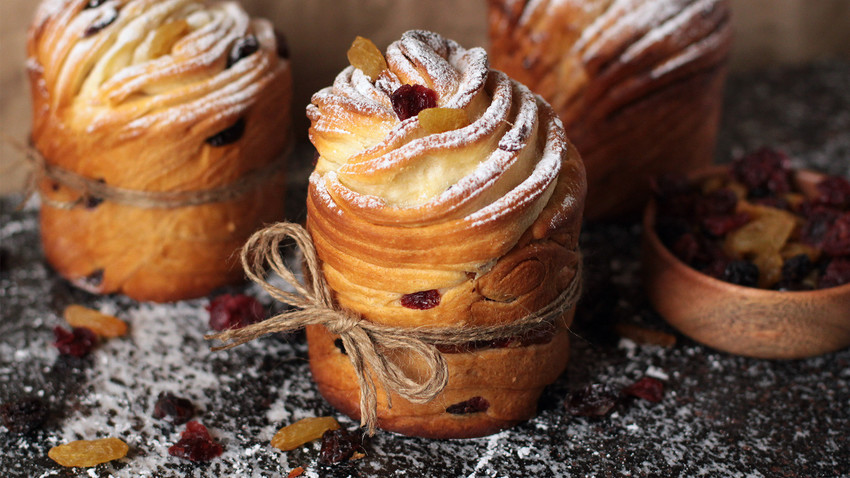
Try this scrumptious cruffin kulich packed with a mix of raisins and dried forest berries.
Victoria DreyRich, yeasty and airy – Slavic kulich is certainly the most important (and honestly most delicious) symbol of the greatest Orthodox Church feast. As with any widely beloved pastry, the numerous Easter kulich recipes differ as far as ingredients, ways of dough proofing, and so on. But the most show-stopping variation is the so-called cruffin kulich. The recipe appeared on the Internet a couple of years ago and quickly became a true hit. It seems the author of the unique kulich was inspired by a modern pastry cruffin shape that came from the Australian and American baking community about a decade ago.
Honestly, this is no wonder: the multiple layered Easter pastry looks and tastes fantastic. The main idea is that you follow a basic Slavic kulich dough recipe, combining it with the European brioche technique to get these scrumptious dough layers inside the pastry.

Frankly, when I first saw kulich in the shape of cruffin I was a bit skeptical how to get this delicious rich pastry without the authentic kulich taste. Luckily, I was so wrong: this cruffin recipe preserves the signature taste of the traditional Slavic Easter pastry that I’ve known for as long as I can remember. Even better, it improves the taste and texture by adding a generous amount of butter at the stage of shaping the kulichi.
One of the best things about this particular kulich is that it goes perfectly with literally any filling – from common dried berries, candied fruits and nuts to cinnamon, chocolate, citrus peel and basically whatever you like in a pastry. Today, I use the most traditional filling – a mix of raisins and dried forest berries, but you should always feel free to experiment.
Ingredients:
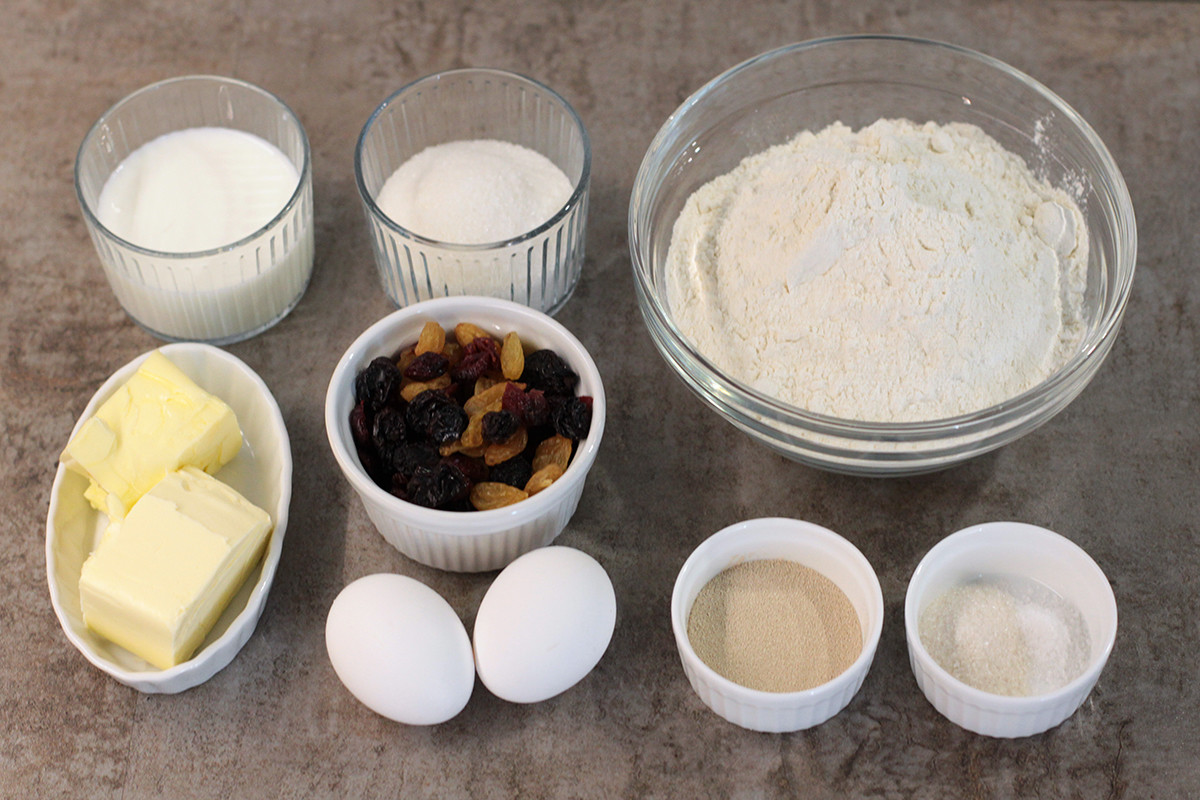
Dough:
- 370 g plain flour
- 110 ml milk
- 100 g sugar
- 2 eggs
- 7 g yeast powder
- 40 g butter
- 1 tbsp vanilla sugar / extract
- ½ tsp salt
Filling:
- 150 g dried fruits and berries
- 80 g butter
Preparation:
1. Start with preparing the filling: pour dried fruits and berries with hot water and set aside for 10 minutes. Today I use the mixture of yellow and black raisin and dried cranberry in equal proportion. Drain and spread the berries on paper towels – they need to be dry before adding into the dough.

2. Now move to activating the yeast: in a bowl mix lukewarm (not hot!) milk, yeast powder and a tablespoon of sugar. In 10 minutes you’ll notice the mixture foams and increases in size – this means the yeast works properly and your pre-dough is ready.
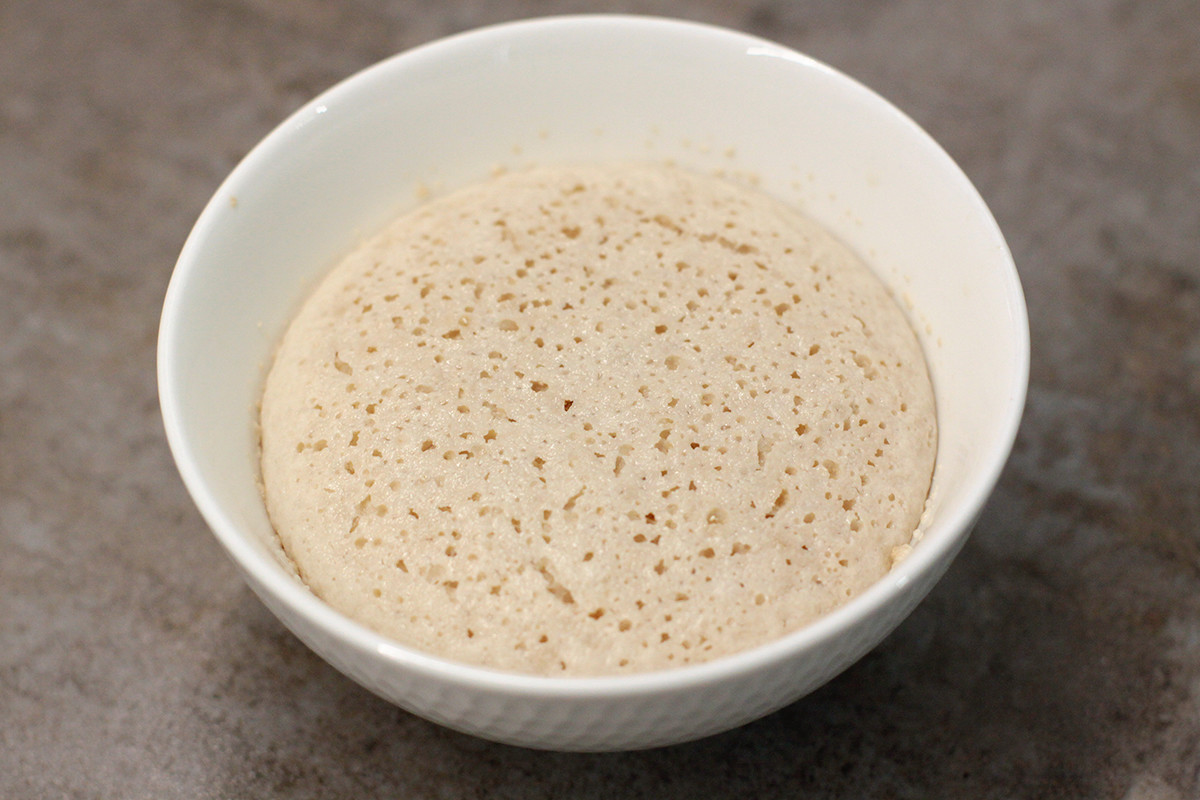
3. Meanwhile, in a clear bowl whip the eggs, remaining sugar, salt and vanilla sugar or extract using a mixer. Your mixture should become pale and airy.
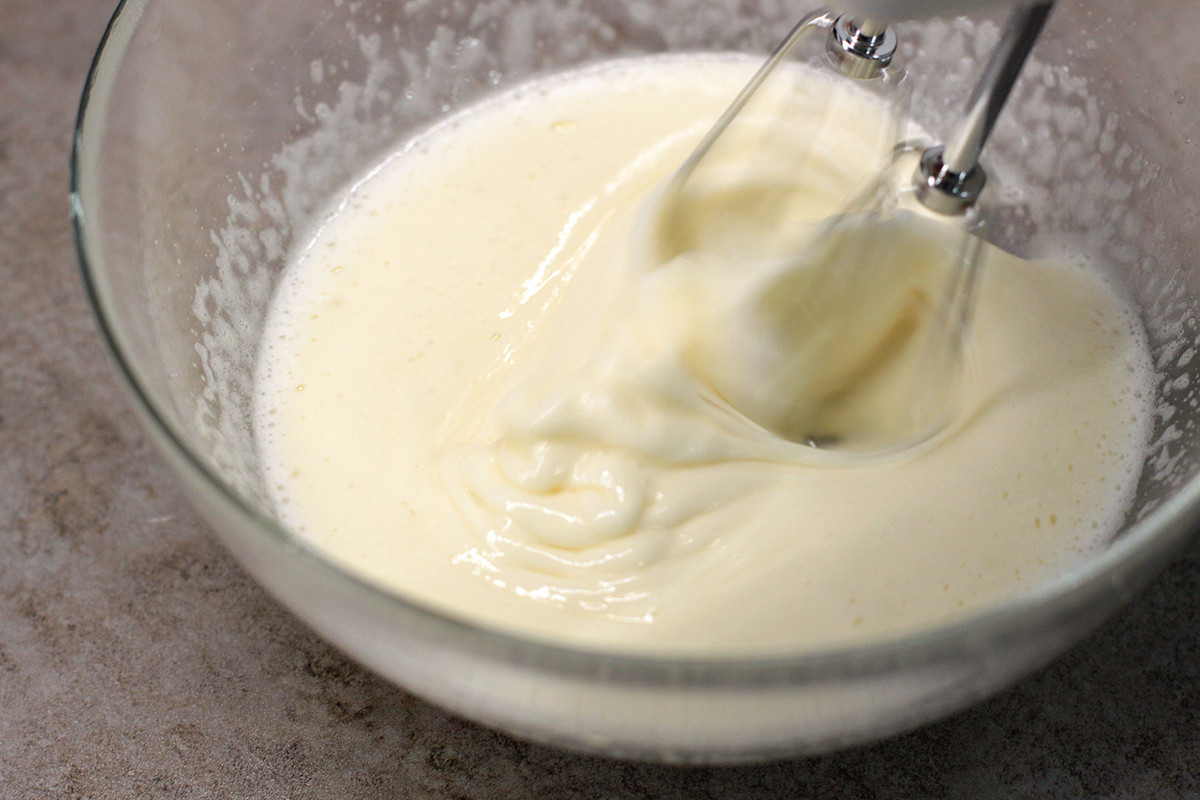
4. Add sifted flour, cool melted butter, pre-dough and start mixing with a spatula, then continue kneading with hands or a stand mixer. Always keep in mind that the amount of flour depends on numerous factors, so I recommend adding around 350 g at first and then add a tablespoon or so if needed.
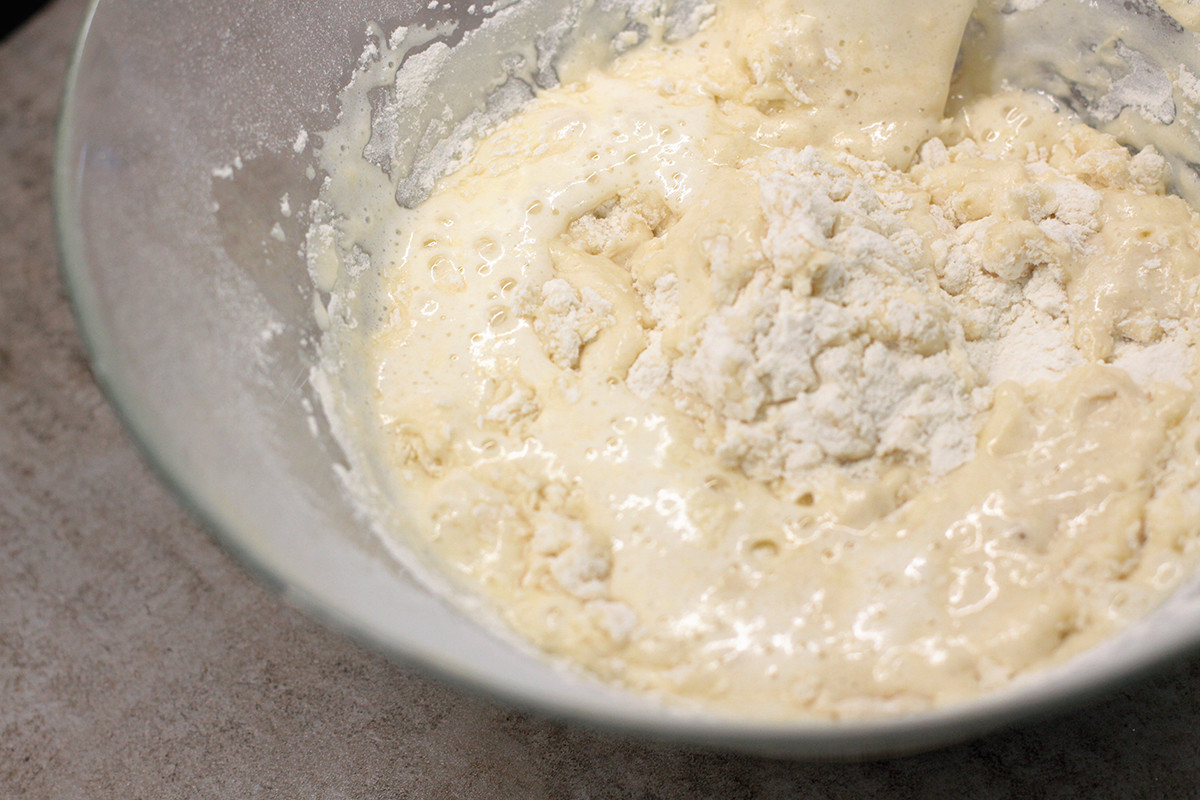
5. Knead for around 10 minutes until you get a soft, silky and non-sticky dough. Put in a clean large bowl, cover with plastic wrap and leave in a warm corner for 1.5 hours to rise.
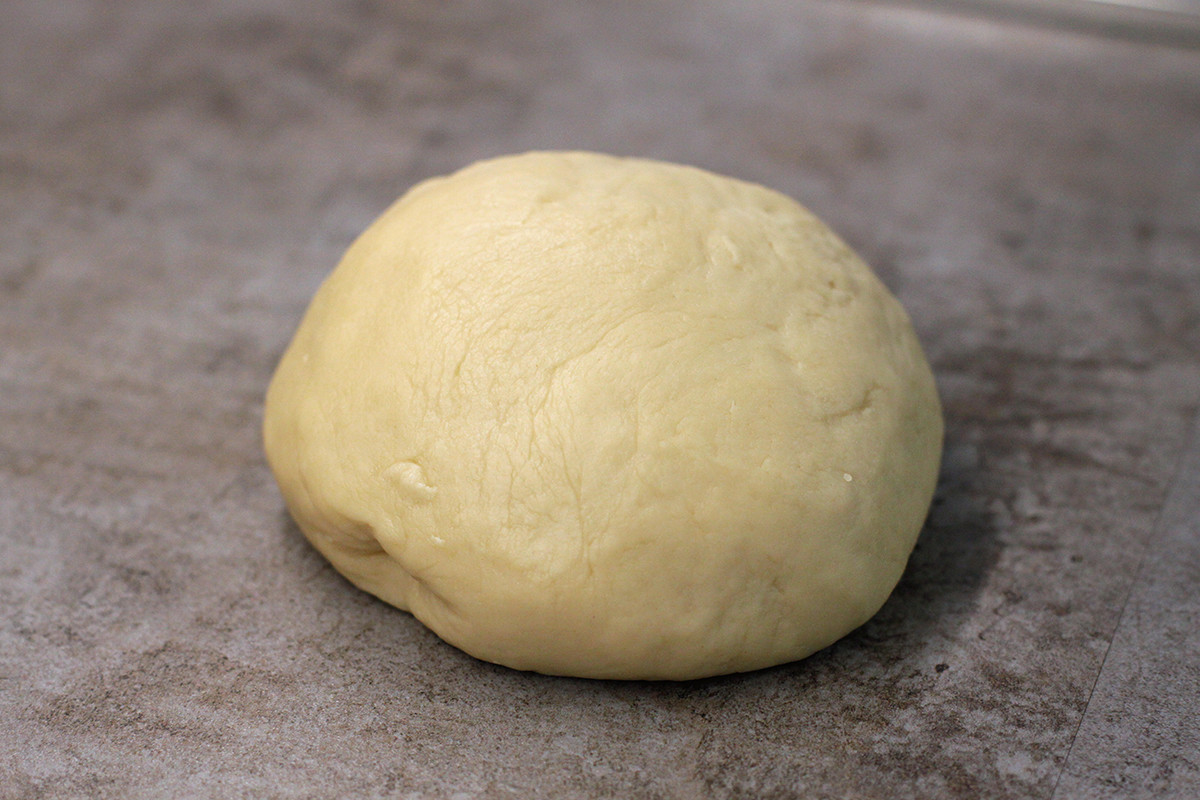
6. Wait until the dough doubles or even triples in size.
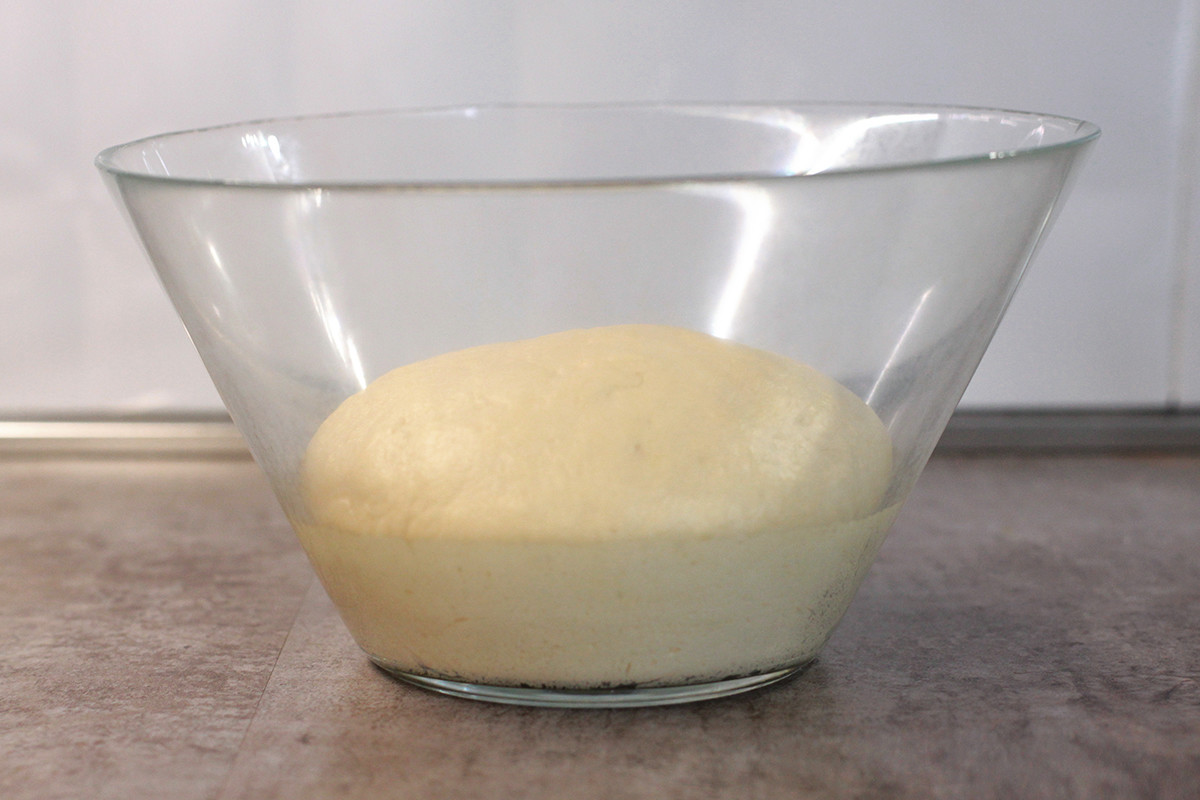
7. Then, gently pinch it down and divide in 3 equal pieces; round them into balls.
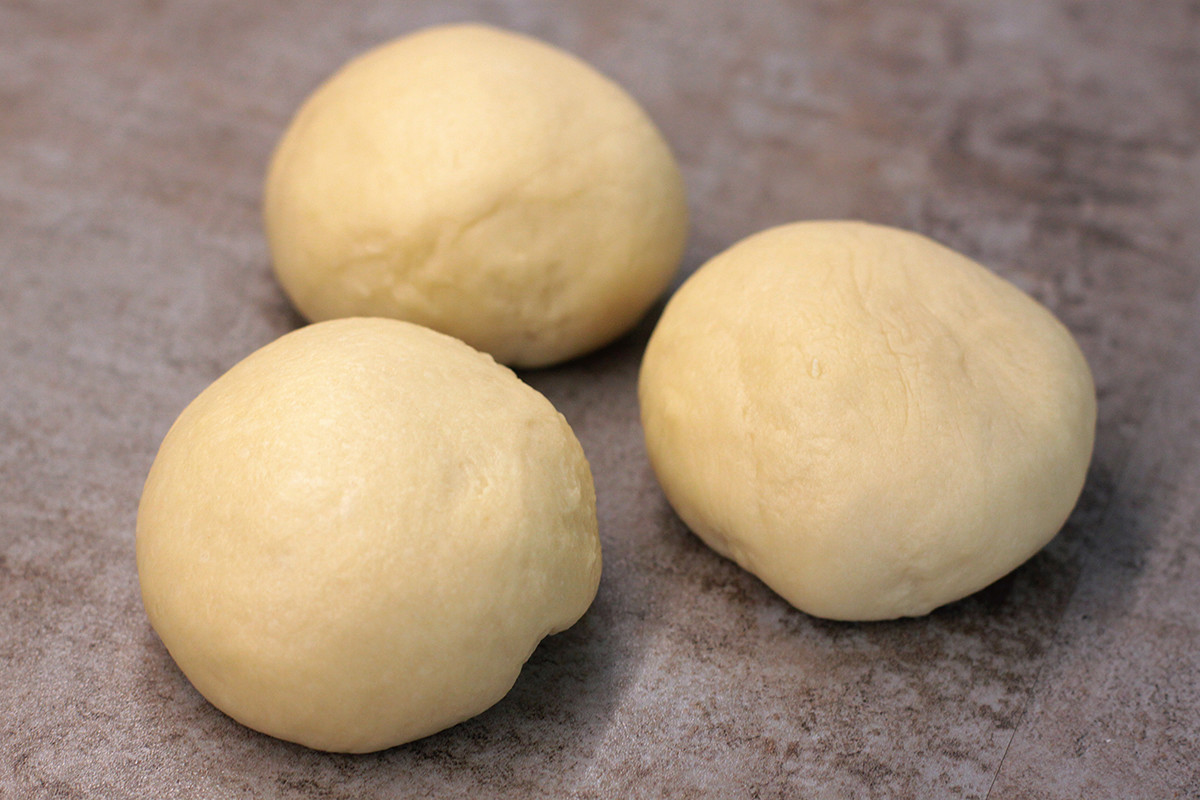
8. Working with one at a time, roll out a piece very thinly into a rectangle, smear with 1/3 of softened butter, and spread 1/3 of dried berries filling over the surface.
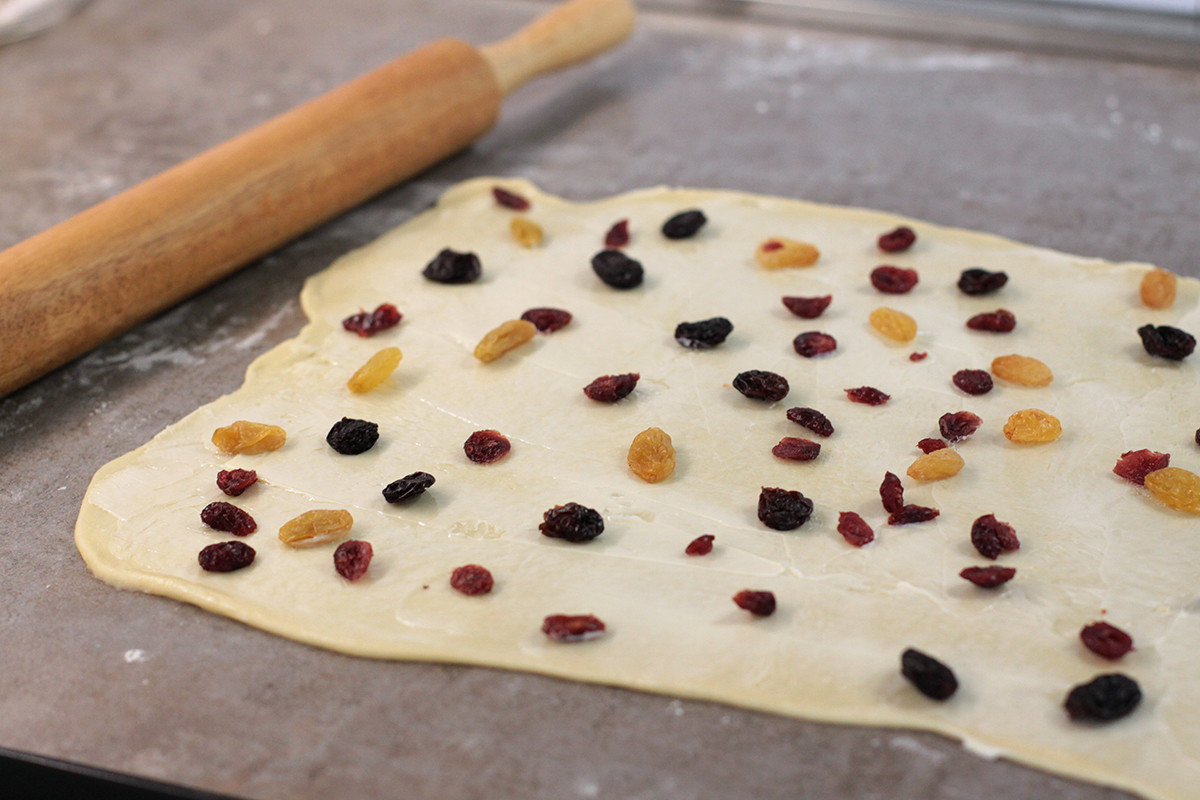
9. Next, roll the layer tightly, cover with plastic wrap and move to another piece of dough.

10. Repeat with another two pieces of the dough and leave your rolls to rest for 5 minutes.
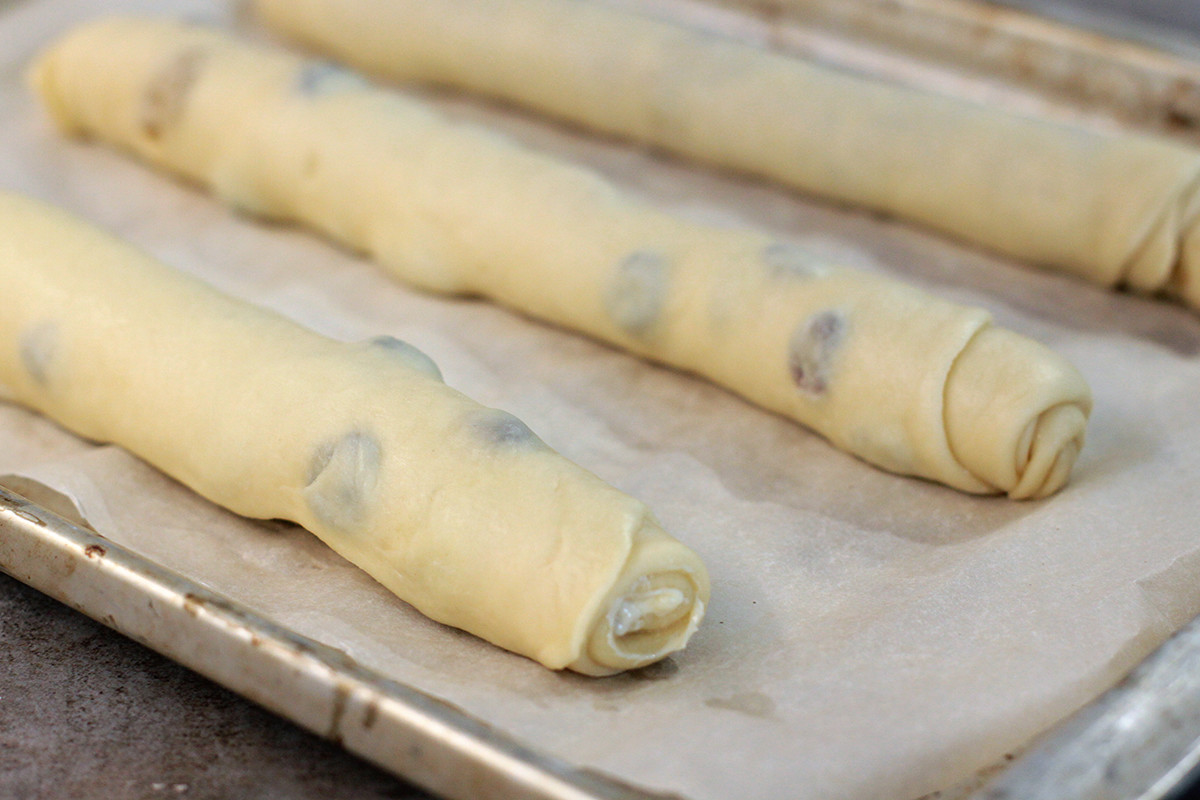
11. When you’re done with all 3 rolls, take the one you worked with first and use the sharpest knife to slice it lengthwise into two strands, leaving around 2 cm at the end intact.

12. Start curling the first strand so that all the layers are visible; then repeat with the second strand – swirl it around the first one, going upwards.
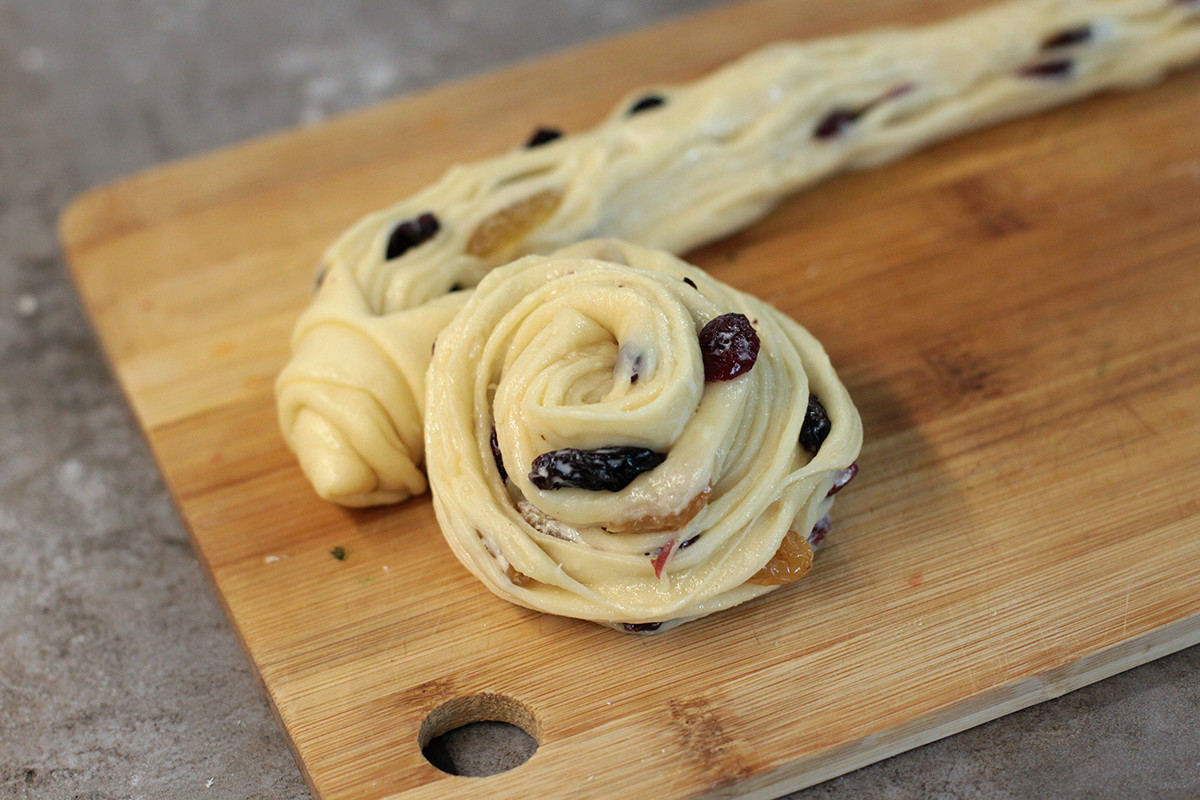
13. When finishing, create a kind of knot on top. Carefully transfer your kruffin into a mold and repeat the whole process with the remaining two rolls.
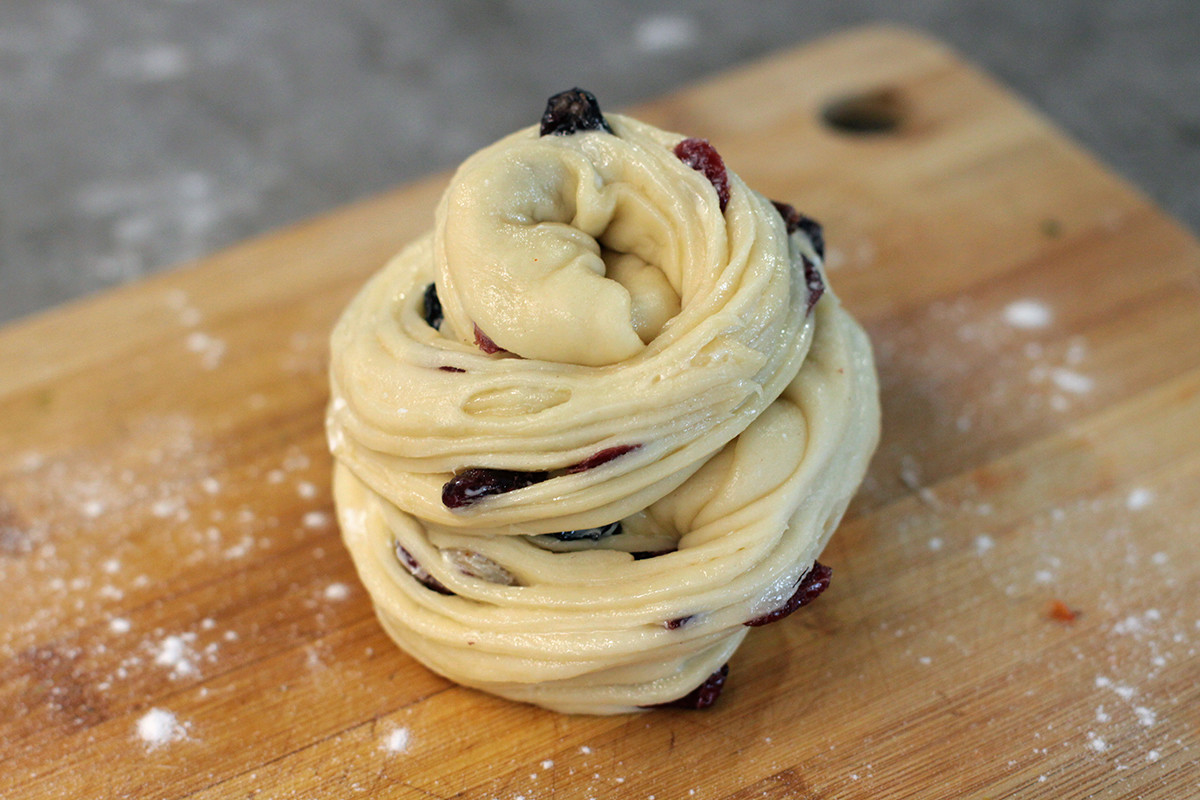
14. Again cover cruffin kulichi with plastic wrap and wait for another hour to let them proof. Bake at 200°C for 5 minutes, then reduce temperature to 180°C and bake for another 30-35 minutes. If you notice the tops start burning then cover with a sheet of foil and continue baking until ready.
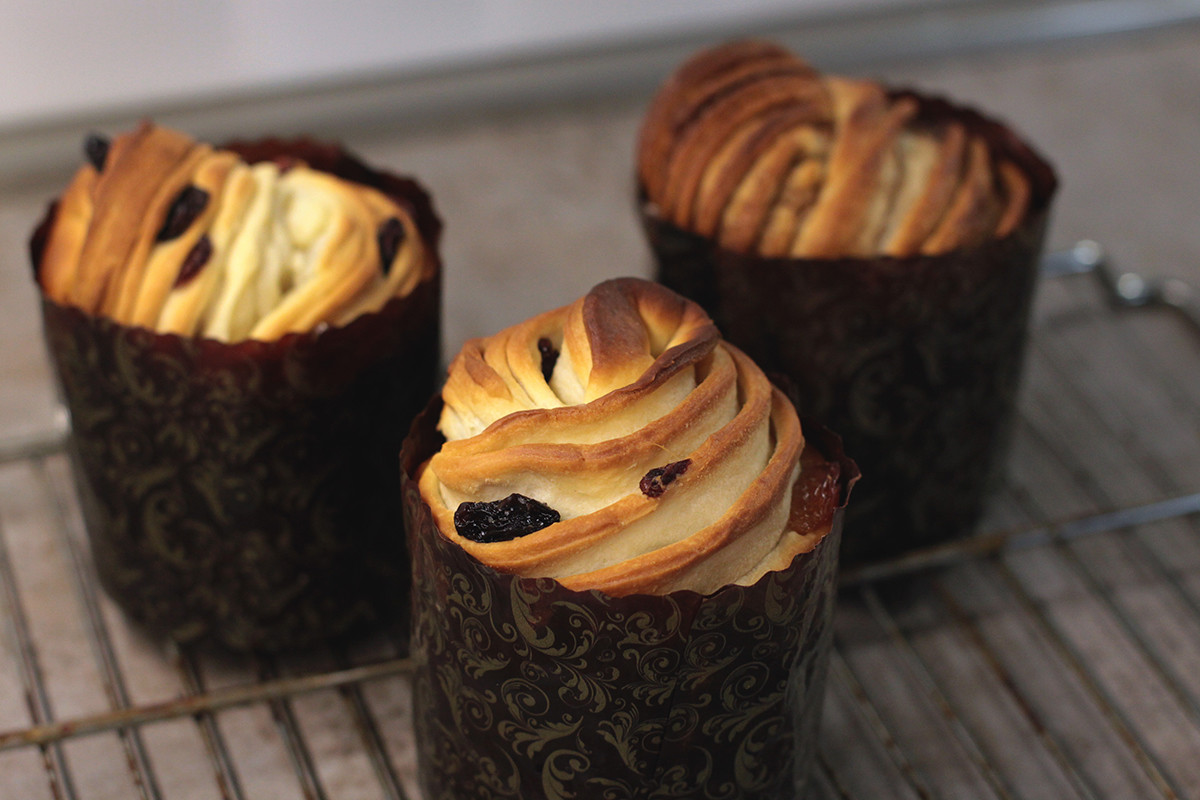
15. The surface of cruffin kulichi is so spectacular that there’s no need to cover it with meringue or sugar glaze, which is the common way of decorating traditional Easter pastry. Just let your kulichi cool completely, generously dust with powdered sugar and enjoy.

16. Happy Easter and priyatnogo appetita!

READ MORE: Chocolate paskha, aka the next level cheesecake for Easter (RECIPE)
If using any of Russia Beyond's content, partly or in full, always provide an active hyperlink to the original material.
Subscribe
to our newsletter!
Get the week's best stories straight to your inbox